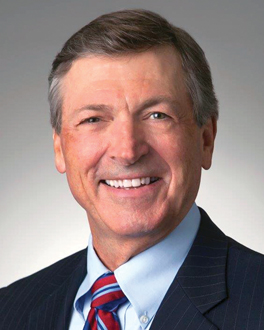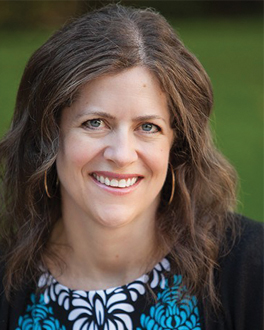There is no question that physical activity has tremendous benefits for everyone, including older adults. But enabling and implementing activities and programs has been challenging during the pandemic.
 Now providers are grappling with ways to get residents active and strong while planning for ways to maintain physical conditioning during future quarantines or other crises.
Now providers are grappling with ways to get residents active and strong while planning for ways to maintain physical conditioning during future quarantines or other crises.
“Our residents are mostly excited to get out and be more active and social, but we have to be cautious because there has been some muscle wasting and strength decline due to the pandemic-related lockdowns,” says Kevin O’Neil, MD, CMD, chief medical officer of North Carolina-based ALG Senior.
“While we made a concerted effort to do things creatively to engage them in the past year and a half, the ability to get out and spend time with family, friends, and other residents has really created a welcomed energy for residents.”
Body, Mind, Spirit, and Safety
Physical activity is a key factor in the prevention of numerous diseases, including diabetes, cardiovascular disease, stroke, and even some types of cancer. It is also associated with improved mental health, delays in the onset of dementia, and quality of life.
“We know physical activity plays a major role in fitness and training, as well as falls prevention,” O’Neil says. “Fitness involves the mind, body, and soul. What happens in one area affects the others.” However, he stresses, “We need to make sure physical activity is safe.”
To promote safe exercise, it is important to start by determining each person’s baseline and limitations. The Exercise Assessment and Screening for You (EASY) is one tool for this. It was developed specifically to help older adults, their providers, and others (such as physical therapists and lif-enrichment staff) to identify what types of exercise or activities can be tailored to people’s needs, interests, and abilities.
Screening in this population, say the authors, should be a dynamic process where participants are engaged to appreciate the importance of regular exercise and motivated to participate as much as possible on an ongoing basis. It is a paradigm shift from traditional screening approaches that focus on the benefits of physical activity. EASY involves six questions:
- Do you have pains, tightness, or pressure in your chest during physical activity (walking, climbing stairs, household chores, similar activities)?
- Do you currently experience dizziness or lightheadedness?
- Have you ever been told that you have high blood pressure?
- Do you have pain, stiffness, or swelling that limits or prevents you from doing what you want or need to do?
- Do you fall, feel unsteady, or use an assistive device while standing or walking?
- Is there a reason not mentioned why you would be concerned about starting an exercise program?
“If someone answers ‘yes’ to any of these questions, it’s important to have a physician or nurse conduct a further evaluation,” says O’Neil. “We have to rely on clinical partners to help assess and identify patients who may need special attention or additional assessments.”
Continually Monitor
 There are other assessments, including the ARISE Flowchart, which provides an algorithm for decision making about fall risk and possible interventions to build strength and balance and improve gait.
There are other assessments, including the ARISE Flowchart, which provides an algorithm for decision making about fall risk and possible interventions to build strength and balance and improve gait.
Kelly Cooney, CCC-SLP, CHC, vice president of clinical compliance at California-based Therapy Specialists, a HealthPRO-Heritage company, says, “In skilled nursing, we are conducting quarterly MDS [minimum data set] assessments and identifying people with changes in function, range of motion, and fall risk, but we should be looking at residents even more frequently so we know their fitness level and what barriers there are to them participating in fitness activities or outings.
“We have been doing a lot of bus rounds,” she adds. “Getting on and off a bus is no joke, particularly if someone is deconditioned.”
Start Small, Go Slow
“Our residents have been somewhat confined during the past year, so we have to reintroduce them to activities and exercise slowly, whether they are enthusiastic and eager to get out and about or they are hesitant,” says O’Neil.
For those residents who are eager, he says, “We bring them out to activities and monitor them to ensure their safety. For those who are hesitant, we bring activities to them—things to keep them engaged—and slowly start to get them more engaged.”
Even for those who are enthusiastic about engagement, O’Neil says, “We started with three-person groups, then five people, then seven. That’s as large as we’ve gotten so far.”
To keep people’s energy and motivation up, as well as to keep them safe, O’Neil says, “We can’t just plug in a video. We need activities with a trained instructor guiding the program. We want to look for issues or red flags that could indicate a problem that needs to be addressed.”
Many older adults haven’t participated in balance and resistance training during the pandemic, so they will need to focus on these, not only to improve their mobility and reduce their fall risk but also to increase their confidence. One option is Tai Chi, which has been shown to be effective in improving balance and coordination, as well as stability and flexibility.
Can’t Wait for ‘When Things Open’
“There are a lot of people, including residents and families, saying, ‘I will be more active and exercise more when things open up.’ We just can’t wait for this. We need to figure out how to make the most of the ‘now,’” says Cooney. “We need to get used to doing things we need and want to do that aren’t dependent on the public emergency.”
 This might mean virtual groups for exercise and activities, things that can be held in a room with staff onsite and the leader at a remote location, she says. “We can’t wait to hold programs and activities like they used to do. We need to figure out how to do things when our facilities are open and when they’re closed.”
This might mean virtual groups for exercise and activities, things that can be held in a room with staff onsite and the leader at a remote location, she says. “We can’t wait to hold programs and activities like they used to do. We need to figure out how to do things when our facilities are open and when they’re closed.”
For instance, she notes, “We have a Healthy Living On-The-Go program that involves prerecorded items that bring expertise to places where they don’t have it onsite, such as chair Zumba classes, ‘laughter is the best medicine’ activities, and education about topics like hydration.”
Re-establishing Routines
Getting out after a year in isolation is a big change for everyone. “We’ve learned how to help people feel more secure and safe. For many people, this means creating a comfortable and familiar routine,” Cooney says. During the pandemic, sitting in their room became the routine for many residents, she says. “We have to establish new routines that give them back some joy and control.”
At the same time, she stresses that it is important to find a way to maintain some of these new routines if another lockdown or quarantine were to happen. “These are things we all want to be paying attention to and knocking down barriers to participation,” she says.
To help, Cooney says, occupational therapists can create occupational profiles on residents, figuring out what they love to do, what creates joy, and what is meaningful to them. Then they can identify which activities or programs will bring people out and enhance their quality of life.
Getting to know each resident is essential, Cooney says. “By finding what they love to do, we can get them out and doing things they enjoy safely,” she says, adding, “I like to tap into other residents who are outgoing to reach out to more reticent people and get them involved.”
Sometimes, it’s about small steps, Cooney emphasizes. “We have a Get Up and Get Connected program to help residents practice self-care and calming techniques for when they feel anxious,” she says.
Role For Therapists
Don’t assume that someone can’t move safely or be active because they are old or frail, cautions Colleen Hergott, PT, DPT, assistant professor and interim chair of the Department of Physical Therapy at the Augusta University College of Allied Health Sciences. “Health is negatively affected by being inactive. At a minimum, we need to focus on decreasing sedentary time and increasing movement,” she says.
A physical therapist (PT) can help by performing an assessment and developing a plan to optimize balance, strength, and mobility, she says. For those who are reluctant to become more active due to concerns about safety or falls, the PT can identify compensatory strategies such using a cane or walker that may provide a temporary boost in confidence to get out and be more active.
Of course, don’t forget the emotional and psychological aspects of physical activity. “It’s all in the delivery,” says Hergott. “We have to make it fun for them to get active. We have to be enthusiastic and energetic in our efforts. They don’t want to hear the negative consequences of being inactive. We have to make the message positive: ‘What matters most to you? These recommendations will help you get there.’”
Team Takes the Field
Whatever approach taken to enable and encourage residents to pursue safe physical activity, success depends on the team.
“Partnerships, such as between therapy providers and life enrichment teams, can’t be overstated. Working together, we can identify what brings joy to residents, what limitations or barriers they face, and how to get and keep them safely active. If we fail to do this, inactivity becomes a cycle and people continue to decline,” says Hergott.
“There are so many health benefits of physical activity, and some are immediate. When we are focusing on balancing physical health, disease management, quality of care, and quality of life, physical activity needs to be in the mix in a meaningful way.”